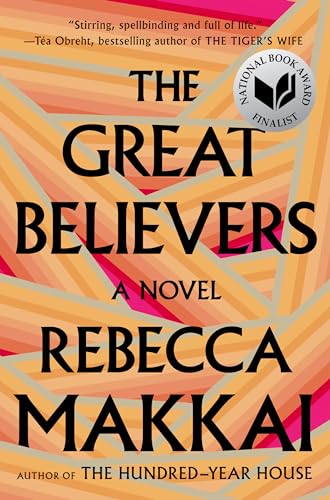There are some who make writing seem like some sort of magic—they’d have you believe the stories just appear and there’s no telling where they came from. Then there are writers like Rebecca Makkai, who are more like engineers: writers who deeply understand the physics of a story, who know how to break it all down and put it back together and make it even better in the process.
I learned this about her back in early 2015 when Brian Turner, the director of the Sierra Nevada College MFA program where I was a student, assigned Rebecca as my second-semester mentor. I’d asked to be placed with her, even though I was a bit intimidated. She had two successful novels and an incredible string of four years of Best American Short Stories selections. And she had a reputation for being a tough mentor, one who didn’t allow for lazy thinking or half-assed work.
 During that semester, she asked me to take apart stories, piece by piece, to figure out how they work. I wrote massive outlines of stories like “Snakes” by Danielle Evans and broke down every minuscule variation in point of view used in Jennifer Egan’s A Visit from the Goon Squad (following an eight-page, single-spaced list of possible variations of POV Rebecca created), among many other tasks. I applied what I learned in writing exercises describing imaginary cities, writing scenes over and over in different points of view, and outlining and tearing apart my own stories.
During that semester, she asked me to take apart stories, piece by piece, to figure out how they work. I wrote massive outlines of stories like “Snakes” by Danielle Evans and broke down every minuscule variation in point of view used in Jennifer Egan’s A Visit from the Goon Squad (following an eight-page, single-spaced list of possible variations of POV Rebecca created), among many other tasks. I applied what I learned in writing exercises describing imaginary cities, writing scenes over and over in different points of view, and outlining and tearing apart my own stories.
I expected, when I picked up her newest book, The Great Believers, to enjoy seeing her lessons about structure and character and conflict come to life in her own work. I wish I could point some out in a more than cursory way, but the story of two friends, Yale and Fiona, and the way their lives are rocked by the “slow motion tsunami” of the AIDS epidemic, absorbed all my attention instead. Yale is living through the worst of the epidemic as it crashes ashore in 1985 Chicago, while Fiona deals with the aftermath as she makes her way through 2015 Paris. Along the way, the reader sees the way the tragedy ripples through time, and as Publishers Weekly said in a starred review, Yale and Fiona’s stories create “a powerful, unforgettable meditation, not on death, but rather on the power and gift of life.”
Rebecca and I talked via Facebook Messenger over a few hours one evening recently about the work of crafting this novel, about the real lives that motivated her writing, and of the opportunity to draw attention to other voices telling the stories of the AIDS crisis:
The Millions: Where did the initial spark for the story come from?
Rebecca Makkai: So, this isn’t going to make much sense. I was visiting my agent right after I’d turned in my second novel, and she asked if I had an idea for my next book, and I said no. I got into a cab, and somewhere between her place and the train station, I saw this really tall, beautiful woman walking down the street, and I assumed she was a model. So I started thinking about models and about artistic muses, and I had a flash of a woman who had been an artists’ model in 1920s Paris. I set out to write about this artists’ model, and I wanted to show her at the end of her life, which couldn’t be much later than the ’80s.
So I started thinking (and this took like a year) about the gallery she’d be in contact with to donate the paintings and sketches she had from that time, and I thought about the development director she’d be in touch with, and I thought about who’d be working at a gallery in the ’80s, and I thought that AIDS might be a small part of the book.
It turned out that the AIDS theme stole most of the book’s gravity. The art is still there, but now it’s only about 5 percent.
TM: Many of your stories draw on other art forms in some way, especially fine art and classical music, stories like “Couple of Lovers on a Red Background,” “Cross,” “The Worst You Ever Feel,” and many others. Here, you have Yale trying to obtain that collection from the model. It seems like a lot of your work approaches other art forms, has a sort of conversation with those existing (or sometimes imaginary) artworks. Why do you think that is? How does it help you craft your own work?
RM: I’m not exactly sure why I write about artists so much, except that I grew up around a lot of poets and musicians (not so much around visual artists) and I relate to the way they think. I think most people do, really—whether or not we’re artists, we’re all trying to find or make beauty in the world. It’s challenging, actually, to write about pieces of art that don’t exist and to describe them so that they seem real. But it’s a lot easier to describe them than to actually PAINT them. If I could be a painter or a musician, I would be. But it’s satisfying to write about pieces of art and pieces of music and almost imagine that I made them real.
TM: In your recent piece in Poets & Writers about writing this novel over a number of artists residencies, you said that including Fiona’s narrative felt at first like a “cowardly move.” What about it felt cowardly?
RM: It was more the motivations behind the decision that initially came from a place of worry. This was still really early in the first draft, of course, but I was writing entirely from Yale’s (third person) point of view in the ’80s, and it started to feel more and more like ventriloquism, and I was really worried about a narrow story like that feeling appropriative. One possible solution, I realized, was to broaden the story quite a bit, and so Fiona’s sections came from that impulse. As soon as I tried it out, though, I knew this is what I should have done from the beginning. The 30 years that elapsed and the way that we could now learn what had happened to people, on top of the second perspective on everything—this was what made the novel really start to work for me.
I was only worried for a little while, maybe between my decision to do it and actually executing it, that I was diluting things, or backing away from my real story just because I was nervous. But once I saw the things this move opened up for me, I was thrilled that I’d pushed myself to go broader.
TM: I know from your acknowledgements that the concern about ventriloquism and appropriation was on your mind. But what would you say to the people who maybe are concerned that a straight woman is writing about something so deeply personal concerning gay men? And how did you ensure you didn’t cross that line from allyship to appropriation?
RM: I really wanted to make sure I could answer two questions satisfactorily for myself. The first was whether I could do this well, and while it’s not up to me to decide if I did, I ultimately felt that I could do it well with scads and scads of research, which I undertook over the four years I was working on the book. The second question was whether the success of this book would ultimately amplify or mute other voices on this topic. I have a couple of reasons to believe it’s the former. First of all, the way commercial publishing works, presses put their money behind books when they’ve seen similar books do well. It’s not a zero-sum game. The more successful this novel is, the more likely the next person is to get published when they’re writing a memoir or novel about AIDS or about LGBTQ history. And I have the chance now to point people toward first person accounts of the crisis and toward other art that came out of it and is still coming out of it. I hope that readers don’t stop with my book—that they move on to other accounts and that they move on to advocacy.
TM: What are some of those other accounts that you would recommend?

 RM: So glad you asked! In terms of nonfiction—for those new to the topic, something compendious like David France’s How to Survive a Plague would be a good starting point (I’d recommend that over something like And the Band Played On, which is wonderful but awfully misleading about the origins of the epidemic). When We Rise by Cleve Jones is a great study of activism. I think we tend to know more theater than fiction about AIDS—Angels in America and The Normal Heart, of course, but for theater I’d also recommend Paul Rudnick’s Jeffrey, which is strange and wonderful. To pick a few pieces of fiction: Rabih Alameddine’s novel Koolaids: The Art of War is brilliant. There’s a story collection called Monopolies of Loss by the British writer Adam Mars-Jones that deals only partly with AIDS, but it really influenced me. I want to put in a word for M.K. Czerwiec’s graphic memoir Taking Turns, which chronicles her time as an AIDS nurse at Illinois Masonic in Chicago. She was a wonderful resource and early reader for my book, and her book is gut-wrenching.
RM: So glad you asked! In terms of nonfiction—for those new to the topic, something compendious like David France’s How to Survive a Plague would be a good starting point (I’d recommend that over something like And the Band Played On, which is wonderful but awfully misleading about the origins of the epidemic). When We Rise by Cleve Jones is a great study of activism. I think we tend to know more theater than fiction about AIDS—Angels in America and The Normal Heart, of course, but for theater I’d also recommend Paul Rudnick’s Jeffrey, which is strange and wonderful. To pick a few pieces of fiction: Rabih Alameddine’s novel Koolaids: The Art of War is brilliant. There’s a story collection called Monopolies of Loss by the British writer Adam Mars-Jones that deals only partly with AIDS, but it really influenced me. I want to put in a word for M.K. Czerwiec’s graphic memoir Taking Turns, which chronicles her time as an AIDS nurse at Illinois Masonic in Chicago. She was a wonderful resource and early reader for my book, and her book is gut-wrenching.
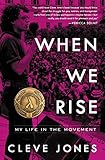 TM: In your research, you spent time talking to people who had lived through the AIDS epidemic, right? I was curious how you approach that sort of conversation. It seems like such a difficult thing to do, to ask someone to talk about this incredibly tragic part of their lives.
TM: In your research, you spent time talking to people who had lived through the AIDS epidemic, right? I was curious how you approach that sort of conversation. It seems like such a difficult thing to do, to ask someone to talk about this incredibly tragic part of their lives.
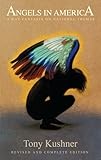
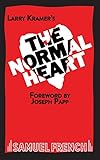 RM: YES. Yeah, so the thing is, there turns out to be very little in book or film form about the crisis in Chicago, specifically. Everything’s about New York and San Francisco. So I ended up having to do a ton of legwork, which was actually a very good thing for the book. First of all, there was a lot of primary source material. I read every back issue of the Windy City Times, Chicago’s biggest gay weekly, from 1985 to 1992. And then I met with a lot of people. Doctors, nurses, activists, lawyers, journalists, an art therapist, survivors, people living with HIV. They were incredibly generous with their time and with their stories, and in many cases, they were sharing tremendously emotional things. And in some cases, people were telling me detailed things about their sex lives about five minutes after I’d met them. Some of them told me it was therapeutic to talk to someone who really wanted to know all this stuff. I got so much more out of talking to them than I would have out of reading some book. Their fingerprints are all over the novel.
RM: YES. Yeah, so the thing is, there turns out to be very little in book or film form about the crisis in Chicago, specifically. Everything’s about New York and San Francisco. So I ended up having to do a ton of legwork, which was actually a very good thing for the book. First of all, there was a lot of primary source material. I read every back issue of the Windy City Times, Chicago’s biggest gay weekly, from 1985 to 1992. And then I met with a lot of people. Doctors, nurses, activists, lawyers, journalists, an art therapist, survivors, people living with HIV. They were incredibly generous with their time and with their stories, and in many cases, they were sharing tremendously emotional things. And in some cases, people were telling me detailed things about their sex lives about five minutes after I’d met them. Some of them told me it was therapeutic to talk to someone who really wanted to know all this stuff. I got so much more out of talking to them than I would have out of reading some book. Their fingerprints are all over the novel.
 TM: Did you ever feel any sort of tug-of-war between the fiction writer in you who saw all this great material to use and the person who knew these were true stories from people’s lives? Did you ever feel like you struggled with fictionalizing elements that might have been based in fact?
TM: Did you ever feel any sort of tug-of-war between the fiction writer in you who saw all this great material to use and the person who knew these were true stories from people’s lives? Did you ever feel like you struggled with fictionalizing elements that might have been based in fact?
 RM: Yes, definitely. It drives me nuts that there isn’t a comprehensive nonfiction account of the AIDS crisis in Chicago, and sometimes I wished I were writing it. There were so many beautiful or heartbreaking or maddening details that I couldn’t fit into my book. While people will learn things from story, I believe, its main intention is not educational, and cramming too much in there wouldn’t have felt right. I didn’t struggle with fictionalizing things—I think that’s just the way my brain works—but I did struggle with not being able to include everything. I have hours and hours of taped interviews that I had to stop myself from listening to again when I reached revision, because I knew I’d want to stuff more and more details in there, to the detriment of the broader story.
RM: Yes, definitely. It drives me nuts that there isn’t a comprehensive nonfiction account of the AIDS crisis in Chicago, and sometimes I wished I were writing it. There were so many beautiful or heartbreaking or maddening details that I couldn’t fit into my book. While people will learn things from story, I believe, its main intention is not educational, and cramming too much in there wouldn’t have felt right. I didn’t struggle with fictionalizing things—I think that’s just the way my brain works—but I did struggle with not being able to include everything. I have hours and hours of taped interviews that I had to stop myself from listening to again when I reached revision, because I knew I’d want to stuff more and more details in there, to the detriment of the broader story.
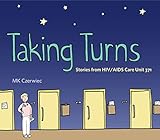 TM: Paris was attacked in the fall of 2015, while you were writing Fiona’s story, also set in Paris in the fall of 2015, so you were forced to reckon with that sudden real-life event in your novel. How did that change the story for you? What did you learn from that experience as a writer?
TM: Paris was attacked in the fall of 2015, while you were writing Fiona’s story, also set in Paris in the fall of 2015, so you were forced to reckon with that sudden real-life event in your novel. How did that change the story for you? What did you learn from that experience as a writer?
RM: Yeah, I was writing it kind of in real time and then the attacks happened. I could have moved the story, but it would’ve been hard, and there were a lot of timelines I’d have had to move. Plus moving it later, I’d have had to reckon with the American election, and I felt like moving it earlier wouldn’t have worked with the age of Fiona’s daughter. So, I decided to just keep the story in 2015 and deal with it. It felt thematically appropriate—the interruption, once again, of public tragedy into someone’s private drama—and it was something to shake Fiona out of her 30-year repression of some of the worst things that had happened to her and her friends in the ’80s. Ultimately, it worked for me because this wasn’t just a character-driven novel where all the conflict comes out of people’s own flaws; it’s a novel about the ways the world comes at you no matter who you are or what you do.
TM: There was an interesting sort of mirror image with the Challenger explosion in the 1985 thread. Was that something you added after having to deal with the Paris attacks, a way to create that similar experience of tragedy, or was it already in the narrative?
RM: I can’t remember which came first, but it wasn’t a related thought process for me (except that in revision I did ask myself if it was too much and ultimately decided it wasn’t; if these people really were living in these years, these incidents would indeed have affected them). The Challenger thing just came more out of my looking up the major events of 1986 and putting them on my Google calendar (I have Google calendars for my novels—it’s terribly nerdy) and that seemed like something that wouldn’t go unremarked. I had a lot of fun with that scene, actually. I think it’s the weirdest sex scene I’ve ever written.
TM: I guess tragedy brings people together in weird ways.
RM: Which is maybe the thesis of the book! I just don’t usually mean it as comically.
TM: One of the things that hit me very hard early on in the novel was the myriad of small ways these men suffered every day. There was, of course, the AIDS epidemic and the unbelievable suffering that came with that, but there were also these everyday tragedies, like not being able to hold hands when walking down the street, or when Yale was afraid to keep a photo of Charlie on his desk at work, the way they had to constantly navigate revealing—or not revealing—this important part of themselves to others.
And with Yale, I keep coming back to that detail about the missing picture on his desk, and it makes me think of something I saw recently in an interview with Tayari Jones, where she said one should write about “people and their problems, not problems and their people.”
For me, Yale felt like a deeply realized character, like Jones’ person with a problem, rather than just a problem with a person attached. There wasn’t a weak character in the book for me, but I find myself still thinking of Yale often (and it was surprising to hear you felt like there was an element of ventriloquism in earlier drafts with him).
What was your entry point for him? What was the moment where he became a fully realized character for you?
RM: It’s funny; I tried too hard to map out this novel before I started writing, and none of it worked. I realized I had to just dive in and get to know my characters first, and the first thing I wrote did end up being the first chapter—specifically, Yale’s really bizarre and lonely experience at his friend’s memorial party. I’m not sure that I knew everything about him yet, but I did start to have a real physical sense of him, a sense of him as a real person. He feels realer to me than any character I’ve ever written, to the point where I’ve occasionally forgotten he’s not real, and have thought of him as someone I once knew intimately but lost.
About the everyday stuff:
A lot of that wove itself naturally into the story, but I still had some missteps early on, some moments of ignorance. The one that sticks out to me was that in my first draft, after Yale gets separated from his friends, I had him walking down the street looking into the windows of gay bars. It wasn’t until I was interviewing someone who was talking about the Chicago bar scene back in the day that I realized that of COURSE you couldn’t look IN THE WINDOW of a gay bar in 1985. They all had shaded glass, or black-painted windows.
I had a lot of little revelatory moments like that when reading it, a lot of things I’ve done my whole life and have taken for granted these guys couldn’t do, little things that could have gotten these guys seriously hurt or even killed. It was pretty eye-opening.
TM: As you work on a novel like this, one that’s challenging and takes a number of years, how do you keep yourself excited? How do you resist that siren call of new ideas?
RM: I don’t know that this is going to work for the interview, but the honest answer is that I had this photo as my computer wallpaper for four years:
They kept staring at me.
It’s five guys at a candlelight vigil in Chicago, around 1991. I learned a lot about one of these guys, and another—the only survivor from the group—sat down and talked to me.
It wasn’t very tempting to work on anything else when they were staring at me like that.
TM: Wow. Yeah, I can see how that would keep you focused. In a recent piece in Tin House, “Candy: A Footnote,” you write that one of the pitfalls of writing is that “no one is ever going to see everything you so carefully invented for them. Not the way you intended.” Is there anything that you’re worried people won’t see here, or will see in a different way than you intended?
RM: I mean, it’s completely inevitable that people will misunderstand or misinterpret some things. One of the wonderful things for me so far with this book, though, has been the early readers who have told me that they pictured a certain lost friend in a certain role. I have my own mental pictures of these guys, but if people are plugging in memories, pictures of real people, that makes me really happy. And I was writing, in some cases, about places I’d never been, bars that have long since closed—places I could imagine but couldn’t picture. And weirdly, some of my readers will be able to picture them in detail because they were there. I like that.
